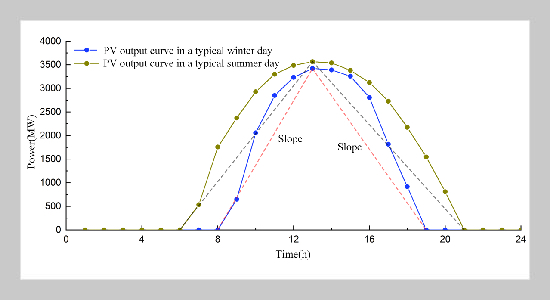- [1] J. Joshi, (2021) “Do renewable portfolio standards increase renewable energy capacity? Evidence from the United States" Journal of Environmental Management 287: 112261. DOI: 10.1016/j.jenvman.2021.112261.
- [2] F. Weschenfelder, G. de Novaes Pires Leite, A. C. Araújo da Costa, O. de Castro Vilela, C. M. Ribeiro, A. A. Villa Ochoa, and A. M. Araújo, (2020) “A review on the complementarity between grid-connected solar and wind power systems" Journal of Cleaner Production 257: 120617. DOI: 10.1016/j.jclepro.2020.120617.
- [3] A. A. Prasad, R. A. Taylor, and M. Kay, (2017) “Assess�ment of solar and wind resource synergy in Australia" Ap�plied Energy 190: 354–367. DOI: 10.1016/j.apenergy.2016.12.135.
- [4] M. Khalid, R. P. Aguilera, A. V. Savkin, and V. G. Agelidis, (2018) “On maximizing profit of wind-battery supported power station based on wind power and energy price forecasting" Applied Energy 211: 764–773. DOI: 10.1016/j.apenergy.2017.11.061.
- [5] N. Bekirsky, C. Hoicka, M. Brisbois, and L. Ramirez Camargo, (2022) “Many actors amongst multiple re�newables: A systematic review of actor involvement in complementarity of renewable energy sources" Renew�able and Sustainable Energy Reviews 161: 112368. DOI: 10.1016/j.rser.2022.112368.
- [6] A. Solomon, D. M. Kammen, and D. Callaway, (2016) “Investigating the impact of wind–solar complementarities on energy storage requirement and the corresponding sup�ply reliability criteria" Applied Energy 168: 130–145. DOI: 10.1016/j.apenergy.2016.01.070.
- [7] J. Jurasz, F. Canales, A. Kies, M. Guezgouz, and A. Beluco, (2020) “A review on the complementarity of re�newable energy sources: Concept, metrics, application and future research directions" Solar Energy 195: 703–724. DOI: 10.1016/j.solener.2019.11.087.
- [8] A. Z. Sahin, (2000) “Applicability of wind? Solar thermal hybrid power systems in the northeastern part of the Ara�bian peninsula" Energy sources 22(9): 845–850. DOI: 10.1080/009083100300001645.
- [9] Q. Tan, X. Wen, Y. Sun, X. Lei, Z. Wang, and G. Qin, (2021) “Evaluation of the risk and benefit of the complementary operation of the large wind-photovoltaic�hydropower system considering forecast uncertainty" Ap�plied Energy 285: 116442. DOI: 10.1016/j.apenergy. 2021.116442.
- [10] M. Bo, L. Yan, L. Pan, W. Yimin, M. Chuanhui, and H. Qiang, (2021) “Long-term optimal operation of hydro�solar hybrid energy systems nested with short-term energy curtailment risk" Journal of Hydraulic Engineering 52(6): 712–722. DOI: 10.13243/j.cnki.slxb.20200659.
- [11] B. Ming, P. Liu, S. Guo, L. Cheng, Y. Zhou, S. Gao, and H. Li, (2018) “Robust hydroelectric unit commitment considering integration of large-scale photovoltaic power: A case study in China" Applied Energy 228: 1341–1352. DOI: 10.1016/j.apenergy.2018.07.019.
- [12] L. Ye, X. Qu, Y. Yao, J. Zhang, Y. Wang, Y. Huang, and W. Wang, (2018) “Analysis on intraday operation char�acteristics of hybrid wind-solar-hydro power generation system" Automation of Electric Power Systems 42(4): 158–164. DOI: 10.13335/j.1000-3673.pst.2020.0690.
- [13] S. Han, L.-n. Zhang, Y.-q. Liu, H. Zhang, J. Yan, L. Li, X.-h. Lei, and X. Wang, (2019) “Quantitative evalua�tion method for the complementarity of wind–solar–hydro power and optimization of wind–solar ratio" Applied Energy 236: 973–984. DOI: 10.1016/j.apenergy.2018.12.059.
- [14] Y. Liu, H. Wang, S. Han, J. Yan, and Z. Lu, (2020) “Real-time complementarity evaluation method for real�time complementarity of wind and solar power consider�ing their volatility" Power System Technology 44(9): 3211–3220. DOI: 10.13335/j.1000-3673.pst.2020.0759.
- [15] D. Cantor, A. Ochoa, and O. Mesa, (2022) “Total variation-based metrics for assessing complementarity in energy resources time series" Sustainability 14(14): 8514. DOI: 10.3390/su14148514.
- [16] Z. Huayu, H. Qiang, M. Bo, et al., (2021) “An efficient method for deriving reservoir operating rules by coupling ensemble forecasting information" Journal of Hydro�electric Engineering 40(5): 44–55. DOI: 10.11660/slfdxb.20210505.
- [17] K. Wang, Y. Liang, R. Jia, X. Wu, X. Wang, and P. Dang, (2023) “Two-stage stochastic optimal scheduling for multi-microgrid networks with natural gas blending with hydrogen and low carbon incentive under uncertain envinronments" Journal of Energy Storage 72: 108319. DOI: 10.1016/j.est.2023.108319.
- [18] J. D. Kern, D. Patino-Echeverri, and G. W. Characklis, (2014) “The impacts of wind power integration on sub�daily variation in river flows downstream of hydroelectric dams" Environmental Science & Technology 48(16): 9844–9851. DOI: 10.1021/es405437h.
- [19] Y. Guo, B. Ming, Q. Huang, Z. Yang, Y. Kong, and X. Wang, (2023) “Variation-based complementarity as�sessment between wind and solar resources in China" Energy Conversion and Management 278: 116726. DOI: 10.1016/j.enconman.2023.116726.
- [20] A. Radovanovi´c and J. V. Milanovi´c, (2021) “Equiva�lent modelling of hybrid RES plant for power system tran�sient stability studies" IEEE Transactions on Power Systems 37(2): 847–859. DOI: 10.1109/TPWRS.2021.3104625.
- [21] W. Wan, H. Wang, and J. Zhao, (2020) “Hydraulic potential energy model for hydropower operation in mixed reservoir systems" Water Resources Research 56(4): e2019WR026062. DOI: 10.1029/2019WR026062.
- [22] G. Nikiforidis, M. Van de Sanden, and M. N. Tsam�pas, (2019) “High and intermediate temperature sodium– sulfur batteries for energy storage: development, chal�lenges and perspectives" RSC advances 9(10): 5649–5673. DOI: 10.1039/C8RA08658C.
- [23] X. Zhang, C. ( Qin, E. Loth, Y. Xu, X. Zhou, and H. Chen, (2021) “Arbitrage analysis for different energy storage technologies and strategies" Energy Reports 7: 8198–8206. DOI: 10.1016/j.egyr.2021.09.009.
- [24] H. Liu, T. Brown, G. B. Andresen, D. P. Schlacht�berger, and M. Greiner, (2019) “The role of hydro power, storage and transmission in the decarbonization of the Chi�nese power system" Applied Energy 239: 1308–1321. DOI: 10.1016/j.apenergy.2019.02.009.
- [25] Y. Zhang, P. E. Campana, A. Lundblad, and J. Yan, (2017) “Comparative study of hydrogen storage and bat�tery storage in grid connected photovoltaic system: Stor�age sizing and rule-based operation" Applied Energy 201: 397–411. DOI: 10.1016/j.apenergy.2017.03.123.
- [26] Z. Lu, H. Li, and Y. Qiao, (2018) “Probabilistic flex�ibility evaluation for power system planning consider�ing its association with renewable power curtailment" IEEE Transactions on Power systems 33(3): 3285–3295. DOI: 10.1109/TPWRS.2018.2810091.
















